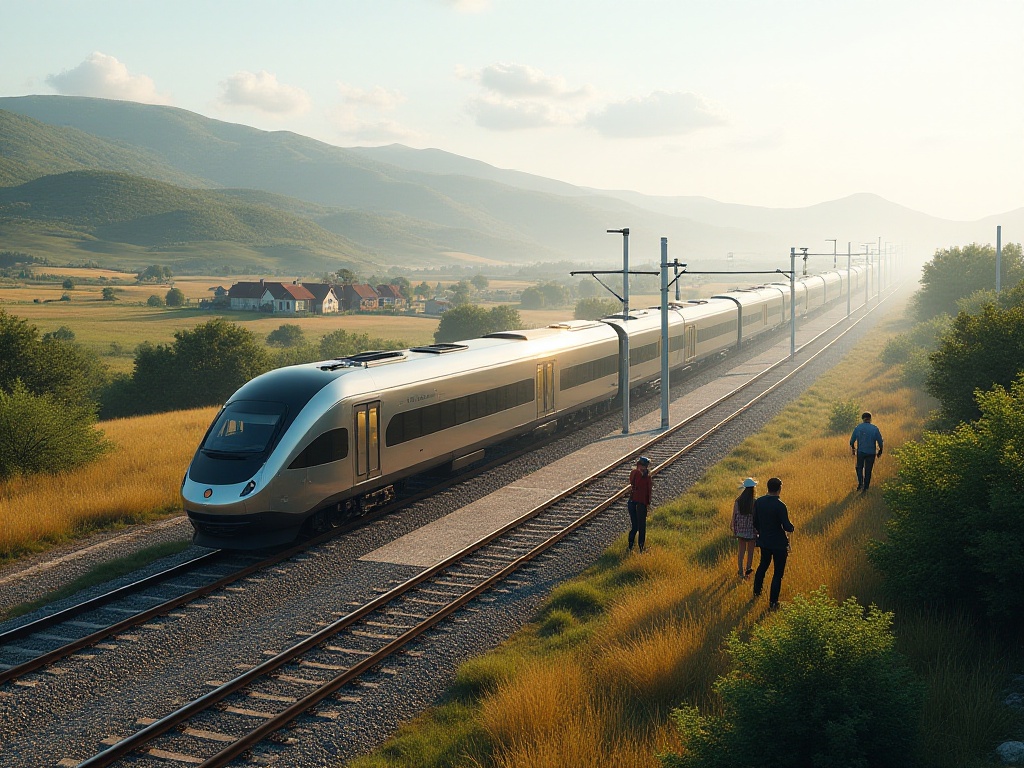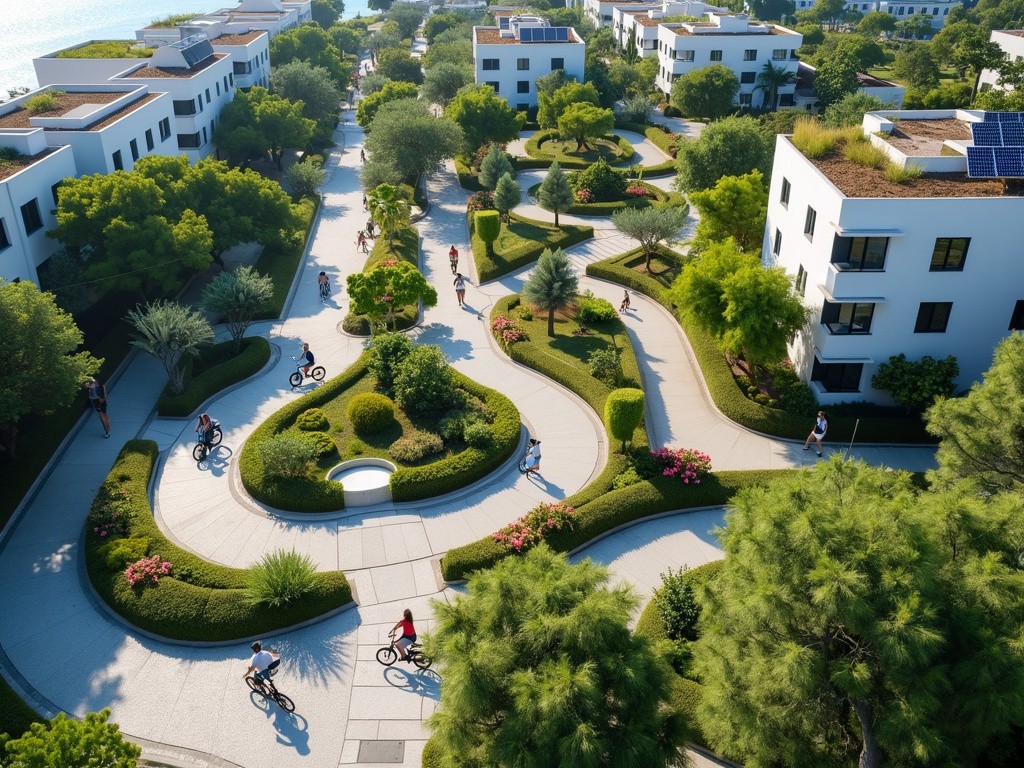The moment I landed at Charles de Gaulle Airport, I decided to experience this city of romance in the most down-to-earth way. As a seasoned metro rider, I discovered that Paris's public transportation system is essentially a moving art museum. This is not just an ordinary travel journal, but a detailed Paris transportation guide.
To be honest, I was quite confused when I first landed, as it was my first time in Paris. But I had already determined to live like a true Parisian rather than be a traditional tourist. I spent quite some time studying the route map at the RER B line station at the airport. Although it looked complex, it was actually super clear. This train goes directly to the city center, and you can see Paris's urban landscape along the way. I started getting excited!
I remember the first time I tried to buy tickets, I stood bewildered in front of the ticket machine for quite a while. At that moment, I wished someone had explained it to me. So now, let me be that helpful "guide."
Paris's transit card system is designed very thoughtfully. I highly recommend the Navigo weekly or monthly pass. Although it's just a small card, it can take you through the streets and alleys of Paris. I bought a weekly pass in my first week for 25.95 euros, covering all public transportation in zones 1-5 - an incredible deal.
To be honest, I was initially worried about buying tickets due to the language barrier, but I found that the ticket machines all have English interfaces - super friendly! The Navigo card application process is also very simple; you just need to bring your passport to the metro station service window. When applying for the card, I met a particularly lovely French gentleman who, despite his limited English, taught me how to reload and use the card through gestures. That scene still feels heartwarming when I think about it.
The best thing about the Navigo card is its convenience. As long as you reload before Monday, you can use it for the entire week. I still remember the excitement of tapping my card at the station for the first time - I felt like I instantly became half-Parisian. You can reload the card at any metro station or newsstand, which is super convenient. Plus, the weekly pass price is really reasonable - considering single tickets cost 1.90 euros, it pays for itself after just a few rides.
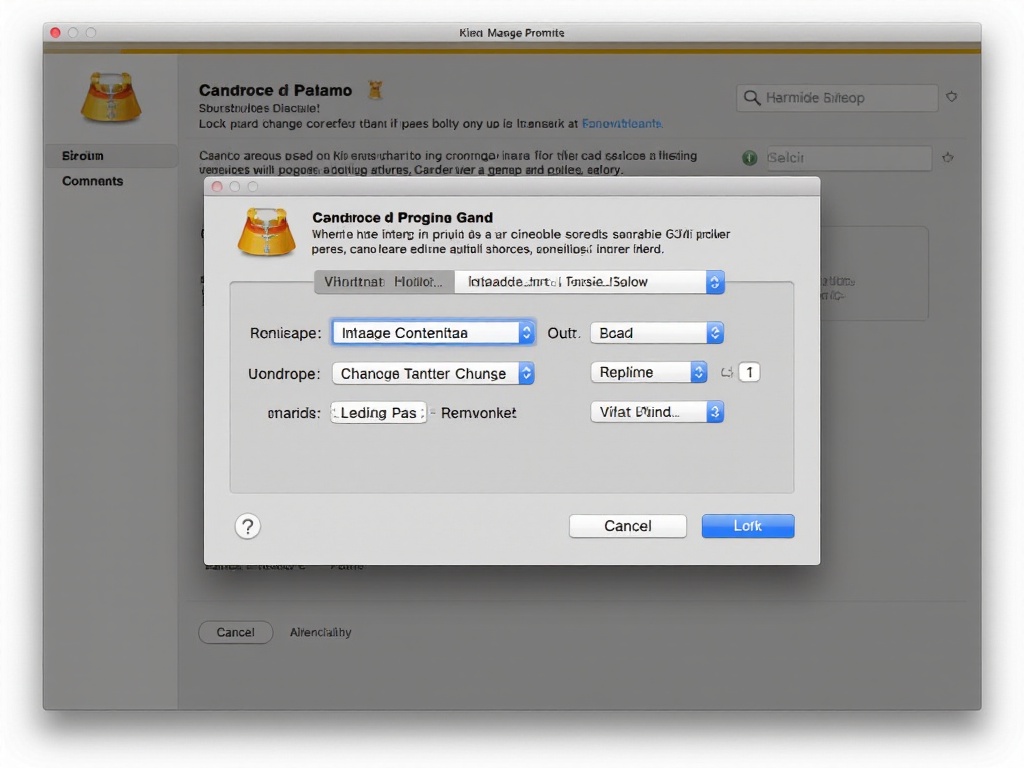
The biggest surprise about the Paris Metro was its artistic atmosphere. Each platform seems to be a unique exhibition space. For example, the Louvre station displays replicas of real antiques, while the Bastille station tells the story of the French Revolution through murals.
The first time I took the metro, I was amazed by the platform design. Each station has its own unique style - some full of artistic flair, some showcasing historical features, and others extremely modern. For instance, the Arts et Métiers station is entirely copper-colored, resembling the sci-fi world from Jules Verne's writings. The first time I went there, I took at least 50 photos on the platform!
Line 1 can be considered the "Golden Tourism Line." From Place de la Concorde to the Louvre, then to the Arc de Triomphe, one line connects Paris's most dazzling jewels. I often sit in the car, watching the station names pass by, feeling like I'm flipping through a heavy history album.
My favorite time to take the metro is around 9 AM. The morning rush hour has passed by then, the cars aren't too crowded, and you can find a seat. Through the window, you can see sunlight sprinkled on the Seine, especially when passing over the Bir-Hakeim Bridge - the scenery is absolutely stunning! Sometimes I deliberately ride to the terminal station just to see more of the views along the way.
Line 4 is also one of my favorites, passing through some of Paris's most characteristic areas. From Gare du Nord to Montparnasse, it passes by Notre-Dame and the Champs-Élysées - every station is worth exploring. I remember one time when I got off at Cité station, the platform design was super retro, with vaulted ceilings making you feel like you're in a medieval underground castle.
Speaking of platform design, I must mention Abbesses station. It's one of the deepest metro stations in Paris, with a super long spiral staircase. Although it's a bit tiring, the murals on the stairwell walls are incredibly beautiful, with different stories on each level. I specifically counted - there are nearly 200 steps! But trust me, it's worth the climb because when you exit the station, you're at Montmartre, where the scenery is breathtaking.
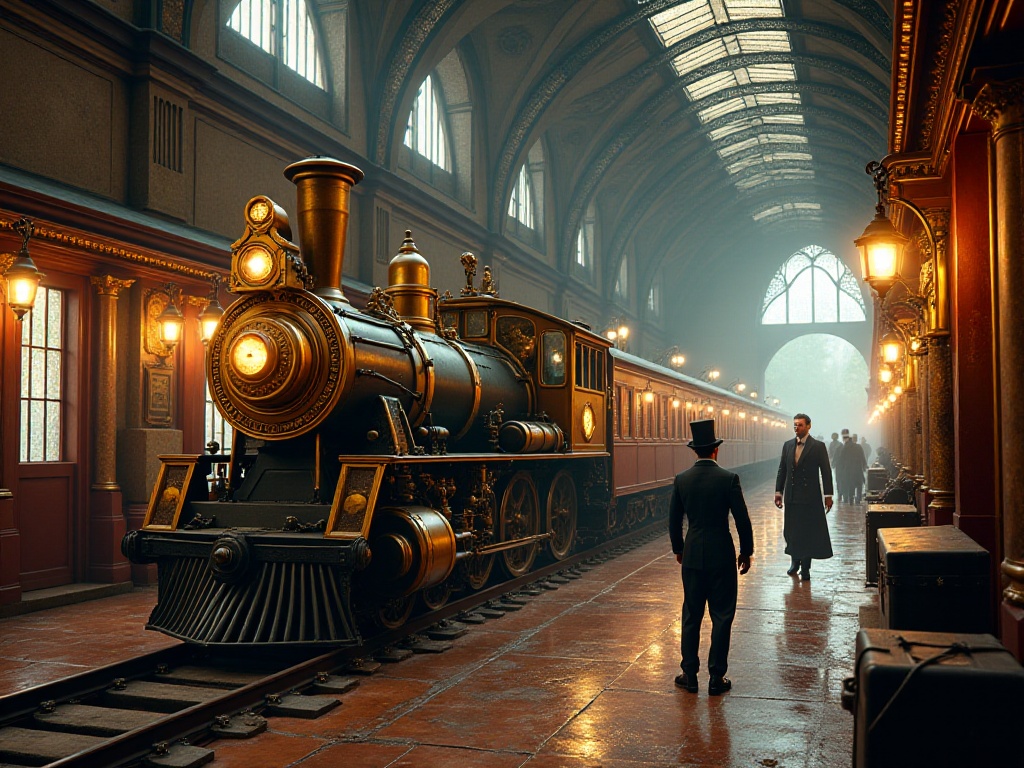
If the metro is Paris's main artery, then buses are the capillaries spread throughout the city. Bus 72 is my favorite, winding along the Seine, letting you appreciate landmarks like Notre-Dame and the Eiffel Tower in the most leisurely way.
Actually, I was quite afraid of taking the bus at first, worried I wouldn't understand the station names and miss my stop. But later I found that Paris's bus system is super intelligent, with electronic displays at each stop showing the next station name and announcements in English. Plus, most buses have WiFi, which is a blessing for tourists who need to check maps constantly.
I remember one time, I specifically chose a sunny afternoon to take Bus 69. This route starts from the Paris Opera, passes by the Louvre and Saint-Germain-des-Prés Church, and finally arrives at the Eiffel Tower. The entire journey was like a carefully planned city tour, yet only cost a regular bus ticket.
The most impressive was Bus 96, which passes through Paris's most fashionable Marais district. The architectural styles along the way range from medieval to modern, and you can see many boutique shops and cafes. Once I specifically took this bus to Place des Vosges, one of Paris's oldest squares. Sitting on the upper deck, it felt like watching a live historical documentary.
The biggest advantage of buses is that you can see more everyday life scenes. Sometimes the distance between metro stations can be quite far, but bus stops are much closer together. This way you can see more local daily life, like morning markets, street performers, and students leaving school. I often see elderly ladies getting on with shopping bags full of vegetables, or office workers in suits rushing to work.

Time management is particularly important in Paris. During weekday rush hours, Metro Lines 1 and 13 can be very crowded. It's recommended to travel during off-peak hours or choose relatively relaxed bus routes. On weekends, many metro lines undergo maintenance, so check official announcements in advance.
Speaking of peak hours, I learned this the hard way. I remember taking Line 1 at 8:30 AM once, and the scene reminded me of Chinese New Year travel rush! I suggest that unless you absolutely need to rush, you can leave half an hour later or choose a combination of walking and bus. I've found that 15-20 minutes walking distance is actually quite common in Paris, and the scenery along the way is particularly nice.
Pay special attention when taking the metro on weekends. Many lines may be rerouted or partially closed for maintenance work. However, the Paris metro company posts clear notices in stations and arranges free shuttle buses. I recommend downloading the official RATP app so you can check route changes in real-time.
Weather is also a factor to consider. Paris weather can be very changeable - sunny in the morning but possibly raining in the afternoon. So I always keep a folding umbrella in my bag. Also, many metro station entrances don't have rain shelters, so it's best to plan your route in advance on rainy days.
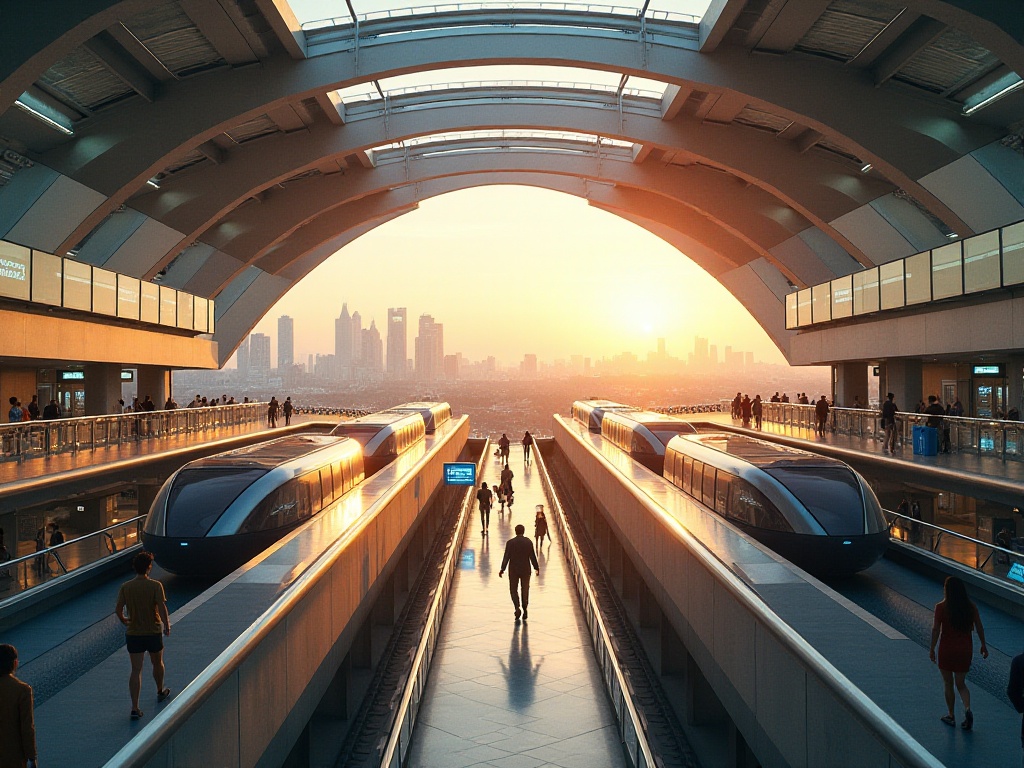
After living in Paris for a month, my biggest feeling is that public transportation here is not just a means of getting around, but also an excellent way to understand the city. Every metro line and bus stop tells a story that belongs to Paris.
Did you know? The Paris metro network extends over 220 kilometers with 302 stations. About 4.5 million people use this system daily. The bus system has 58 main routes, serving over 3 million passengers each day. Behind these numbers is the pulse of a city and the daily lives of millions of people.
What surprised me most were the diverse people I encountered. Sometimes street performers would perform in the carriages, making boring metro journeys lively and interesting. Once when I got lost in a metro station, a French lady actively helped me with directions in broken English - that warmth is unforgettable.
Public transportation also showed me real Parisian life. In the morning metro, you can see students with bread, office workers in suits, and artists with drawing boards. On evening buses, there are housewives with shopping bags, children returning from school, and couples on dates. These ordinary scenes make up Paris's most authentic side.
I particularly like observing the decorative styles of each metro station. For example, the walls of Concorde station are made of blue and white tiles inscribed with the content of the French Declaration of Rights. The Louvre-Rivoli station is like a small ancient Roman art exhibition, displaying various sculpture replicas. These details turn daily commuting into a cultural journey.

If you're planning to visit Paris, don't limit yourself to tourist spots. Try using public transportation like locals, and you'll discover a completely different Paris. Each metro station is a small museum, and each bus route is a scenic avenue.
This month's experience has made me deeply understand that to truly know a city, you need to experience not only those glamorous attractions but also the daily life of ordinary citizens. And the public transportation system is precisely the best link connecting these two worlds.
What I want to share most is, don't treat transportation as just a means of getting around. Try observing people while waiting for trains, listening to music in metro stations, and appreciating the artistic decorations on platforms. These details will make your Paris trip unique.
I remember on my last day in Paris, I specifically took the metro and bus from morning to night. Watching the scenery outside the window change from dawn to dusk felt like watching a time-lapse film of Paris. At that moment, I suddenly understood why this city attracts people from all over the world.
So, are you ready for a different kind of Paris journey? Trust me, exploring Paris by public transportation will bring you more surprises than expected. Each time you tap your card to enter a station is the beginning of a new adventure; each journey is the start of an unknown story. Let's together discover Paris's most beautiful side in the most down-to-earth way.
 Previous
Previous

